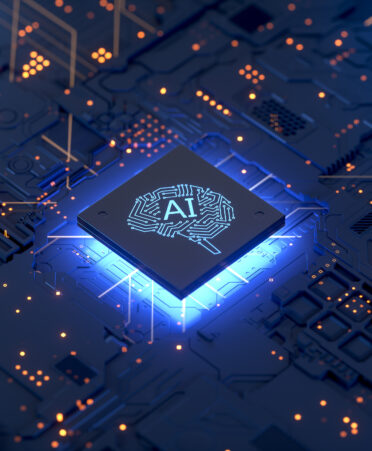Summary
As one of the industries that is wholly focused on the online world, cybersecurity was, and is, one of the leading applications for AI.
(ROSENBERG, Texas) – Before the invention of the chainsaw, woodcutters used saws and axes to chop down trees needed for firewood. The addition of the chainsaw made cutting trees easier and quicker than ever before.
Wallace Pennington, an instructor in the Cybersecurity program at Texas State Technical College’s East Williamson County campus, believes that the recent innovations in artificial intelligence are poised to do the same for the cybersecurity field.
He noted, however, that the inclusion of AI has already been a long-standing tradition in the cybersecurity industry. As one of the industries that is wholly focused on the online world, cybersecurity was one of the leading applications for AI.
“The reason why (AI has been used) is because when you do traffic analysis in cybersecurity and you’re looking for anomalies, artificial intelligence and machine learning applications can review amazingly large sets of data and look for those anomalies that humans can’t,” Pennington said.
While AI has been useful for analyzing sets of data, it has not been great at communicating anomalies or what it analyzed. The reports it would give would then have to be looked over by people in order to spot discrepancies or cyberattacks, which took a lot of time and effort.
With the inclusion of AI programs such as ChatGPT, this issue has begun to be mediated.
“Artificial intelligence is really good at looking at the overall computing environment and saying, ‘OK, something’s different,’” Pennington said. “With ChatGPT capability, it can now write a human language readable report and notify you. So the notification is another key aspect, and that’s getting better.”
For now, students in the Cybersecurity program at TSTC and those in the cybersecurity field still need to know the basics. Bringing back up the chainsaw analogy, Pennington said that those using the chainsaw still need to know where and how to cut the tree down. Without specialists to look into what the AI is observing and reporting on, cybersecurity would not be possible.
But the role of those within the cybersecurity field is likely to change over the coming years, and, Pennington believes, sooner rather than later.
“Education is the key,” Pennington said. “People need to know what AI can do, what it’s used for. You still have to learn everything we teach, but you’re going to use it with a different tool now to implement it.”
TSTC offers an Associate of Applied Science degree and certificates of completion in Cybersecurity at the East Williamson County, Fort Bend County, Harlingen, Marshall, North Texas and Waco campuses, as well as online. An advanced technical certificate in Digital Forensics Specialist is offered 100% online.
Cybersecurity is one of TSTC’s Performance-Based Education programs, meaning that students can move through their training at a flexible pace.
The program is recognized as a Texas Skill Standards Board program by the Texas Workforce Investment Council.
According to onetonline.org, digital forensic analysts in Texas can earn a median salary of $83,340 a year. The website projected that there would be a 20% increase in the number of such jobs in the state from 2020 to 2030.
For more information regarding TSTC, go to tstc.edu.
